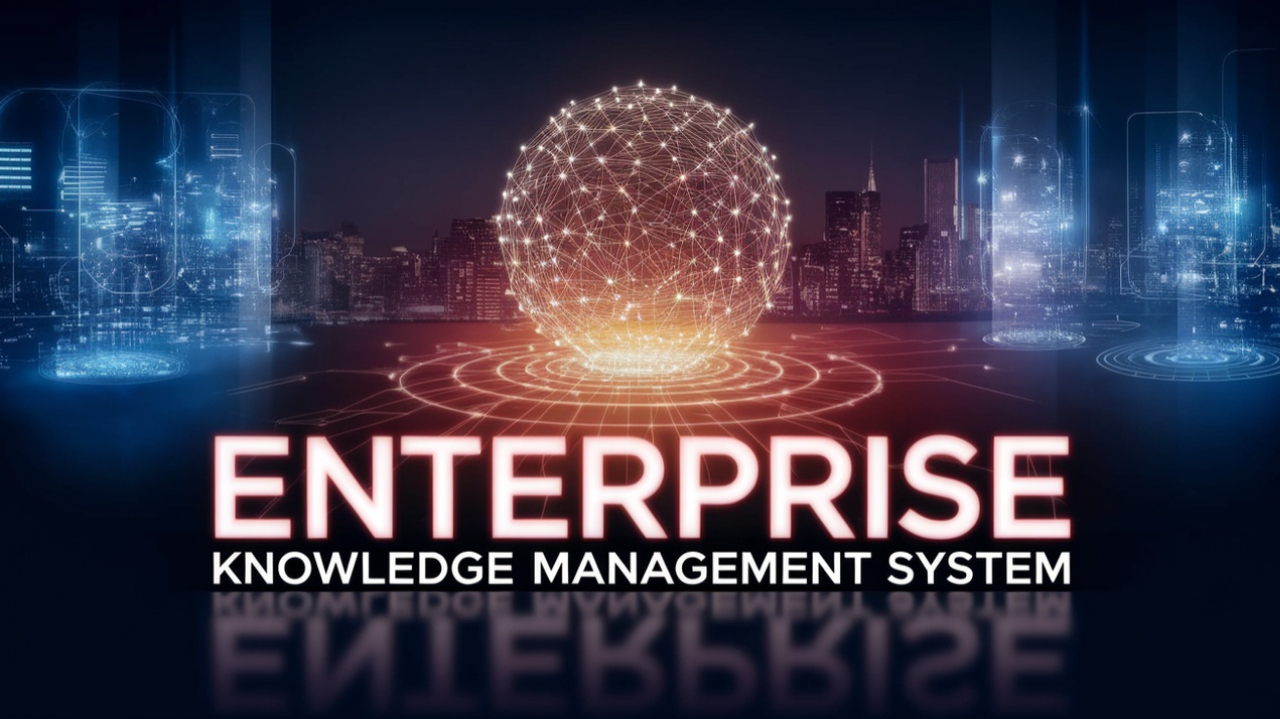EKMS Full Form-Enterprise Knowledge Management System
by Shashi Gaherwar
0 1929
Enterprise Knowledge Management System: Boosting Efficiency and Innovation in Organizations
Introduction
In today’s fast-paced business environment, organizations generate and process vast amounts of information daily. Without a structured approach to managing this knowledge, valuable insights can be lost, productivity can suffer, and decision-making may be hindered. This is where an Enterprise Knowledge Management System (EKMS) becomes essential.

An EKMS helps organizations systematically collect, store, organize, and share knowledge across teams, enhancing efficiency, collaboration, and innovation. This article explores the concept of an EKMS, its key benefits, components, and how it supports business growth.
What is an Enterprise Knowledge Management System?
An Enterprise Knowledge Management System (EKMS) is a digital platform designed to capture, store, organize, and distribute knowledge within an organization. It integrates information from various sources, ensuring employees have quick access to accurate and up-to-date knowledge when needed.
These systems leverage advanced technologies such as artificial intelligence (AI), machine learning, and cloud computing to improve knowledge retrieval, automate workflows, and enhance collaboration.
Key Benefits of an Enterprise Knowledge Management System
- Improved Decision-Making: An EKMS provides real-time access to critical information, enabling managers and employees to make informed decisions based on data-driven insights.
- Enhanced Productivity and Efficiency: By reducing the time employees spend searching for information, an EKMS minimizes redundancy and streamlines workflows.
- Better Collaboration Across Teams: A centralized knowledge repository ensures that different departments can access and share information seamlessly, fostering collaboration and innovation.
- Knowledge Retention and Transfer: EKMS ensures that valuable institutional knowledge is preserved, preventing knowledge loss when employees leave or retire.
- Standardized Knowledge Sharing: Organizations can maintain consistency in processes, training materials, and policies, ensuring employees adhere to best practices.
- Enhanced Customer Service: With quick access to accurate information, customer support teams can resolve queries faster, improving customer satisfaction.
Key Components of an Effective EKMS
An effective Enterprise Knowledge Management System consists of the following components:
- Knowledge Repository: A centralized storage system where documents, reports, policies, FAQs, and best practices are securely maintained.
- Search and Retrieval Mechanisms: Advanced search functionalities, including AI-powered recommendations and metadata tagging, ensure quick and relevant access to information.
- Collaboration Tools: Integrated communication tools, such as discussion forums, chat features, and document-sharing capabilities, enhance teamwork and knowledge exchange.
- Content Management System (CMS): A CMS allows organizations to create, edit, and manage digital content efficiently.
- AI and Automation Features: AI-powered chatbots, automated workflows, and predictive analytics enhance the EKMS by reducing manual effort and improving data utilization.
- Security and Access Control: A robust EKMS includes role-based access control (RBAC) to ensure that only authorized personnel can access sensitive information.
How an EKMS Supports Digital Transformation
As businesses embrace digital transformation, EKMS plays a crucial role in:
- Facilitating Remote Work: Employees can access critical knowledge from anywhere, improving flexibility and productivity.
- Integrating with Other Business Tools: EKMS can be linked with CRM, ERP, and HRM systems for seamless data exchange.
- Leveraging Big Data: Advanced analytics provide insights into knowledge usage, helping organizations optimize their information management strategies.
Implementing an EKMS: Best Practices
To successfully deploy an EKMS, organizations should:
- Define Clear Objectives: Identify key knowledge management goals.
- Engage Stakeholders: Involve employees in the design and implementation process.
- Choose the Right Technology: Select an EKMS that aligns with business needs and integrates with existing tools.
- Ensure Data Quality: Maintain accurate and well-structured knowledge content.
- Promote Knowledge Sharing Culture: Encourage employees to contribute and utilize shared knowledge resources.
An Enterprise Knowledge Management System (EKMS) is a powerful tool that helps organizations streamline information management, improve collaboration, and drive innovation. By implementing a well-structured EKMS, businesses can enhance efficiency, retain critical knowledge, and maintain a competitive edge in the digital era.
As organizations continue to evolve, the need for effective knowledge management solutions will only grow. Investing in an EKMS today ensures a smarter, more connected, and more productive workplace for the future.
Further Learning Resources
If you’re passionate about building a successful blogging website, check out this helpful guide at Coding Tag – How to Start a Successful Blog. It offers practical steps and expert tips to kickstart your blogging journey!
For dedicated UPSC exam preparation, we highly recommend visiting www.iasmania.com. It offers well-structured resources, current affairs, and subject-wise notes tailored specifically for aspirants. Start your journey today!

Share:








Comments
Waiting for your comments